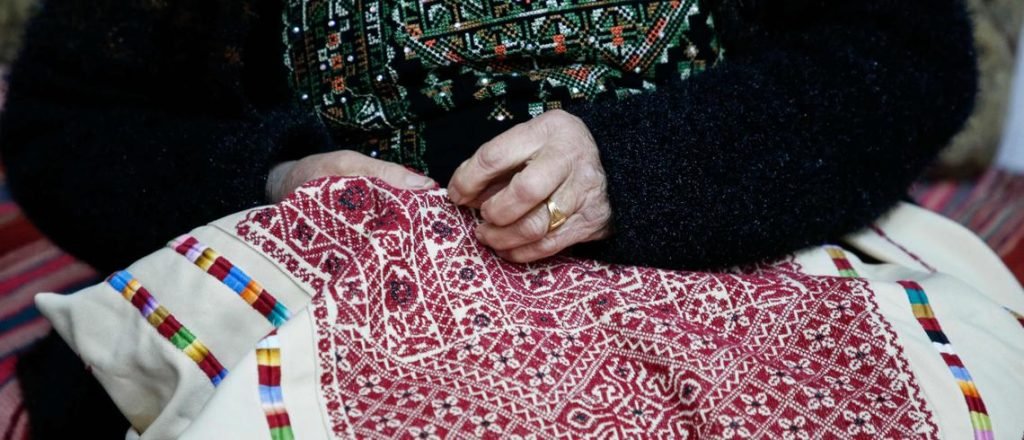EMBROIDERY CLASS
Palestinian embroidery is a rich artistic tradition that has been passed down from generation to generation, by mothers to their daughters. This workshop will explain the meaning of the patterns, the history of the tradition and will teach you some of the stitches so that you can make an embroidered item to take away.
Palestinian embroidery is a visual representation of identity and can be ‘read’ to indicate a women’s religion, local village, marital status and occupation. The most common embroidered items are the dresses and the designs vary from village to village, and across the different regions in Palestine. It is these local patterns and pictures which reveal the village and part of Palestine the woman is from.
This is important during Palestinian weddings, where the bride traditionally wears a Palestinian “thobe” (dress) reflecting her heritage and the attachment to the original village or region of Palestine where her family is from.
Women intricately embellish dresses, jackets, pillows, tablecloths and cushions made out of natural hand dyed and woven materials. The main techniques used in Palestine are cross-stitch and couching stitch.
The women working on this embroidery project also see it as a way to sustain themselves in the camp, so that they can have a source of income. They also have workshops where they teach the younger generation about Palestinian embroidery and pass down their knowledge of this art.

- Visit the Aida refugee camp in Bethlehem and meet your embroidery teacher in their house;
- View beautiful examples of local embroidery and hear about the meaning behind them;
- Receive personal instruction on the stitching and make your own souvenir to take away!
- 1.5 hours
- $65 per person